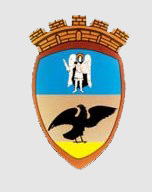

Tarashcha, Ukraine
Тараща, Yкраïна
טאראשטשע


Tarashcha, Ukraine
Тараща, Yкраïна
טאראשטשע

Sketches
| BESSIE THOMASHEFSKY | |
|---|---|
|
Born in Tarashcha in 1873 as Bessie (sic) Kaufman, she and her family immigrated to America in 1878 where they settled in Baltimore. In 1887 Boris Thomashefsky traveled to Baltimore with his theater troupe where they are scheduled to perform his play Aliles Dam –Blood Libel– at Concordia Hall. It is here, backstage, that Boris, age twenty-one, first meets Bessie Kaufman, age fourteen. The following year,1888, Bessie runs away from home to join Boris as an actress and begins to play ingenue roles. This same year, at the Boston Music Hall, Bessie acts her first starring role in Goldfaden's Shulamis. Bessie and Boris marry in 1889. In 1908 Bessie starred in Oscar Wilde's Salomé. Bessie went on to establish a successful career of her own. She founded her own theater troupe and began producing plays, such as Vaybershe |
Melukhe (Women's Kingdom) and Minke di Dinstmoyd (Minke the Maid), that dealt with women's issues such as women's suffrage and birth-control. Bessie wrote a beauty column in Di Varhayt and performed in English language vaudeville houses. In 1916, Bessie takes over management of the People's Theater. Yiddish Theater became one of the great American art forms. The Thomashefskys played a major role in bringing this about. Both Bessie and Boris had great influence on the Follies and on Broadway theater. Jewish immigrants were introduced to American culture and were exposed to the works of great artists (e.g., Goethe, Wagner, Shakespeare, and Ibsen) through Yiddish Theater. |
| REBBE RAPHAEL OF BERSHAD | |
|---|---|
|
Born in Germany or possibly in the Netherlands in about 1751, Raphael moved to Bershad (100 miles southwest of Tarashcha) when he was still young. Rebbe Raphael became a distinguished disciple of Rebbe Pinchas, a close friend of the Baal Shem Tov, the founder of the Chassidic movement1. Rebbe Pinchas believed that one could achieve spiritual union with G-d through self-purification and self-nullification. This world is no illusion, and man must try to perfect himself in this world. He emphasized moral principles and faith; honesty and humility is the way to serve G-d. Rebbe Raphael personified these principles - he was pious and humble. To lie, even a minor lie, or to show any pride, is an unacceptable sin. Raphael was truthful, modest, loved peace, and adhered to Jewish Law (halacha). He believed that truth is the entire basis of all that is holy and falsehood is the source of impurity in the world. This was the central principle of his life. His ideas excluded the mystical theme of mainstream Chassidism. Rebbe Raphael introduced customs and liturgical elements ("the Bershad liturgy") that are closer to the Ashkenazi rites than to Chassidic style of prayer. |
There are a number of variant legends connected to the death of Rebbe Raphael that revolve around an ethical dilemma. One such legend is found in a history of Tarashcha written by Jacob Roven in the 1930's (Tarashtshe: a historye fun a kleyn shtetel in Kiever gubernye, Ukrayne). Rebbe Raphael arrives in Tarashcha on a Thursday to visit the cemetery where a tree had been planted by R. Motele of Chernobyl. Raphael declines an invitation to stay in Tarashcha for Shabbos, promising to return another time. The rebbe goes on his way, but then regrets his decision because he cannot be sure that he can keep his promise. Raphael returns to Tarashcha for Shabbos, where he becomes ill and dies from an epidemic - the last victim - on Shabbos and is buried under the tree he came to see. The Imrei Pinchas HaShalem states that near the end of his life Rebbe Raphael lived in Tarashcha with a grandchild. He died on 14 January 1827 (15 Tevet 5587) - a Sunday. This is consistent with the date of 15 Tevet cut into his headstone. He is buried in Tarashcha. |
| OTHERS | |||||||||||
|---|---|---|---|---|---|---|---|---|---|---|---|
|
The Russian Jewish Encyclopedia (Rossiyskaya Evreiskaya Entsiclopediya, first ed. 1995) lists several people who were born in Tarashcha and attained professional success. The entries in this encyclopedia, it should be noted, are written in Russian. These Jews are: |
|||||||||||
| Moiz Gaisinsky | 1898-1976 | Chemist |
| Efim Moiseevich Livertovsky | 1910-1978 | Engineer |
| Vladimir Mikhailovich Yurovsky | 1915-1972 | Musician |
| Avraam Efimovich Zlatotsvetov | 1900-1970 | Military |
1. A Jewish revivalist movement that arose in the mid-eighteenth century
in Eastern Europe in response to pogroms and to disappointment
with the messianic claims of Shabbatai Tzvi.